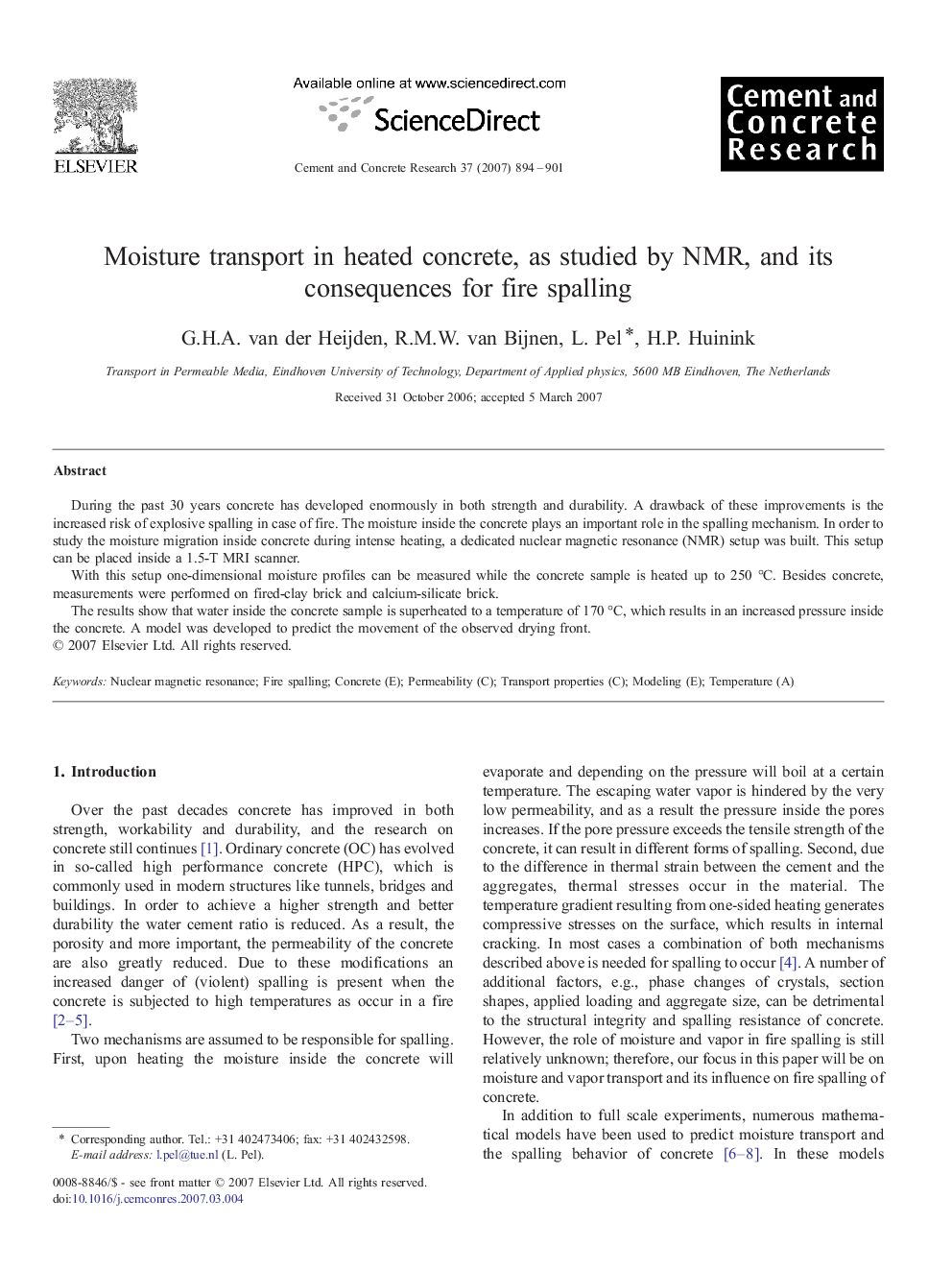| Article ID | Journal | Published Year | Pages | File Type |
|---|---|---|---|---|
| 1457613 | Cement and Concrete Research | 2007 | 8 Pages |
During the past 30 years concrete has developed enormously in both strength and durability. A drawback of these improvements is the increased risk of explosive spalling in case of fire. The moisture inside the concrete plays an important role in the spalling mechanism. In order to study the moisture migration inside concrete during intense heating, a dedicated nuclear magnetic resonance (NMR) setup was built. This setup can be placed inside a 1.5-T MRI scanner.With this setup one-dimensional moisture profiles can be measured while the concrete sample is heated up to 250 °C. Besides concrete, measurements were performed on fired-clay brick and calcium-silicate brick.The results show that water inside the concrete sample is superheated to a temperature of 170 °C, which results in an increased pressure inside the concrete. A model was developed to predict the movement of the observed drying front.
